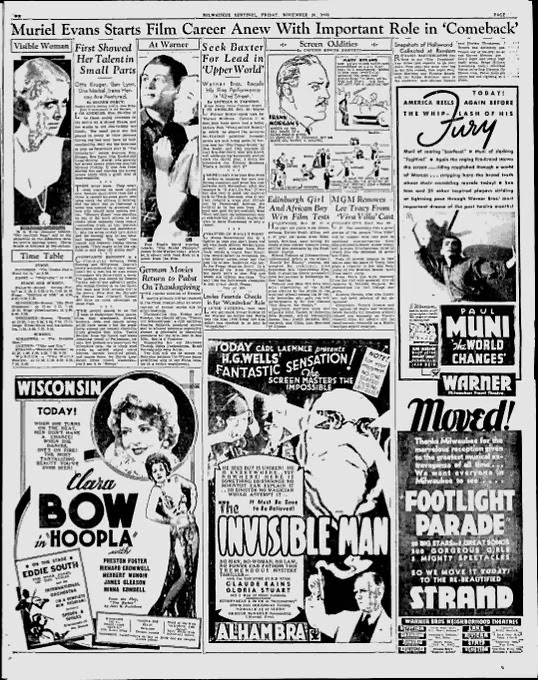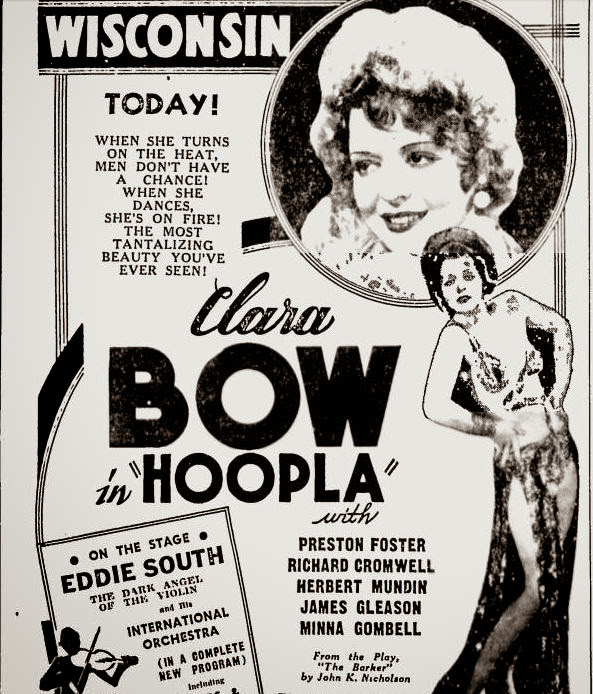
You'll also note the competition for the Warner duo. Let's take a slightly closer look at each.

James Whale's Invisible Man is now, after 80 years, one of 1933's best-known pictures. As part of the Universal horror cycle, it's one of the few 1933 films that remains culturally relevant on the pop level. The Whale film may be second only to King Kong in that respect. During the buildup, Universal made big claims for this one.

The other point of interest in the ballyhoo is the way the ads build up Claude Rains, emphasizing his stage credentials, without letting on that you'd see his face only at the very end of the film. That didn't stop him from making the hoped-for impression.
If The Invisible Man is a living film today, Hoopla isn't.

Hoopla was Clara Bow's second film for Fox and the follow-up to her scandalous comeback picture Call Her Savage. Such was the career of the 1920s "It Girl" that a comeback film was necessary when Bow was not yet thirty. Call Her Savage has become a canonical Pre-Code picture, but Hoopla hasn't the same reputation. Bow's comeback ended here; apparently it was her own call to call it quits but it seems right in retrospect that she bow out before the Code Enforcement crackdown. We can keep an image of her in our imaginations as a star who wasn't and maybe couldn't be tamed.
No comments:
Post a Comment